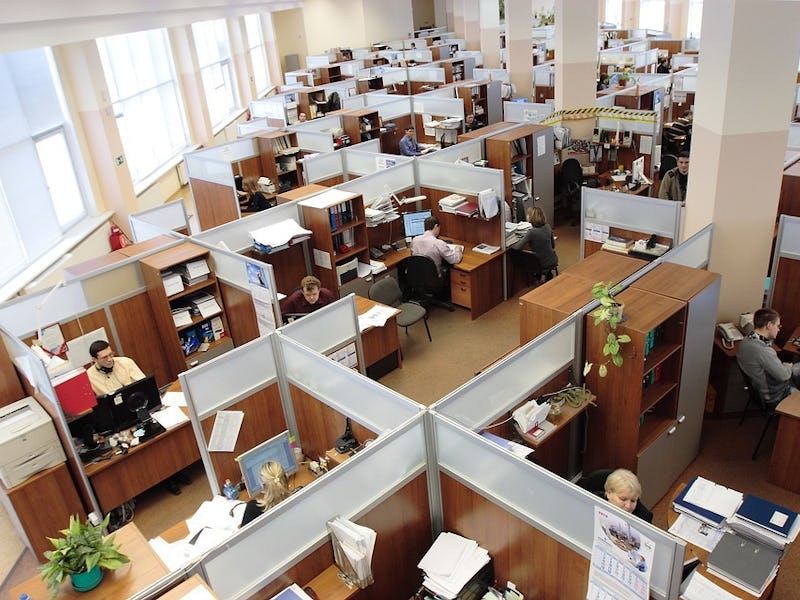Open Offices Make Us Healthier, Says Study We Must All Dutifully Ignore
Did... an open office write this?

If you’re a human adult tasked with achieving some level of productivity during the work day, you have perhaps, on occasion, felt less-than-kind feelings about open office floor plans.
And to be fair, there is evidence to support your bias for an office with a door that shuts, including from a new study published just last month which found that open offices actually discourage face-to-face interaction. That study, at least for a precious internet moment, seemed to debunk the idea that open offices are about encouraging collaboration (as opposed to, say, cutting costs at the expense of your sanity).
Unfortunately, you may want to hold off on those passive aggressive email forwards to you company management for now. That’s because an even newer study, this one from researchers at the University of Arizona, identified a number of benefits to open offices — really good benefits — in the form of employees who reported lower levels of stress and more frequent physical activity throughout the day.
Again, we’re really sorry to have to be the ones to tell you this, because it really seemed like the movement to restore privacy to the workplace was finally taking off. And not only with employees but even with CEOs like Basecamp’s Jason Fried, who valiantly shot down a number feeble defenses of always-present offices during a recent tweet storm. But the story might be more complicated than any one system being better than the other.
Why Open Offices May Not Be So Bad
The main perk for open offices, this new Arizona study found, was that the people who work in them experience less daytime stress and more physical activity throughout the day than employees who work in offices or in cubicles. The study was published in Occupational and Environmental Medicine and was funded in part by the U.S. General Services Administration, which office space houses more than 1 million federal employees.
To arrive at their findings, the researchers gave about 231 employees at federal buildings stress and activity monitors that they wore for three nights and two work days. The more open the office, the more physically active the employees were, which helped also dramatically reduce their readings for physiological stress.
This new study also comes shortly on the heels of one surprisingly impassioned defense of open offices from the workplace architect Ashley Dunn, who wrote in Fast Company the recent anti-open offices study made a crucial mistake. Essentially, Dunn argues that the study which suggested open offices reduce workplace collaboration were basically too open.
“The study only tested how much collaboration happens in poorly designed and extreme open plan offices with absolutely no walls or partitions,” Dunn’s column reads. “A designer well-versed in workplace strategy would never suggest such an environment for a client.”
Based on her column, it certainly seems as if Dunn has designed a few such offices, but she definitely raises an important point: The best environment to be productive is going to vary wildly from person to person and from workforce to workforce.